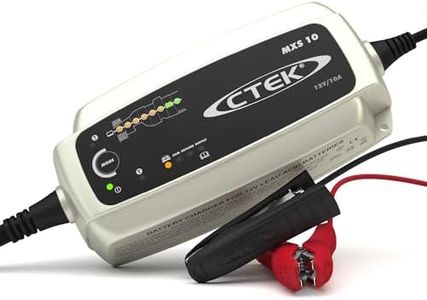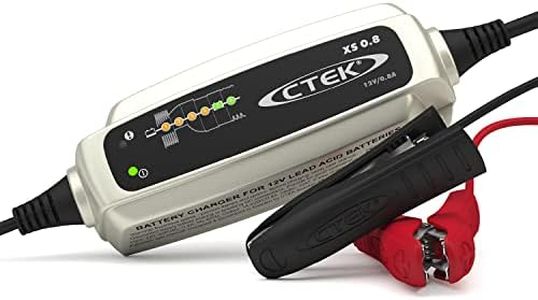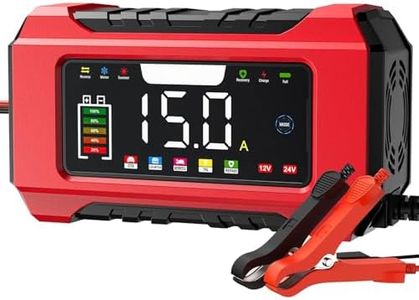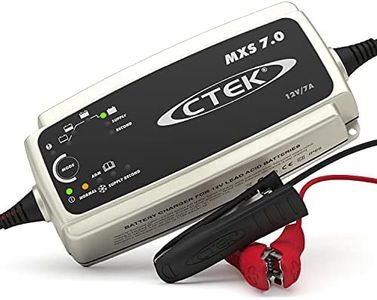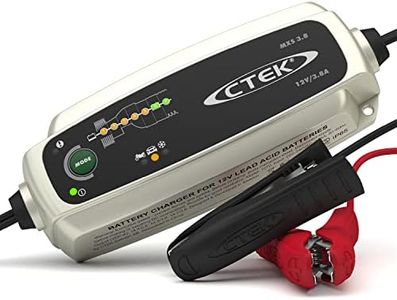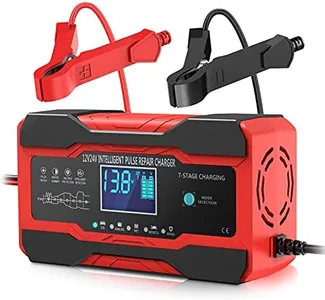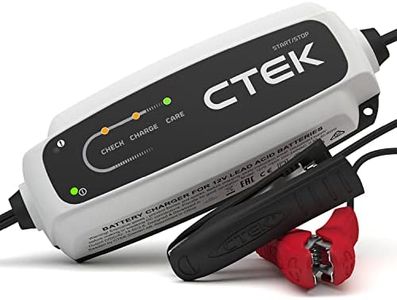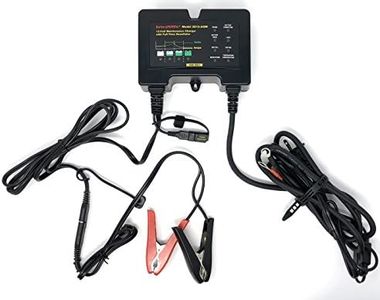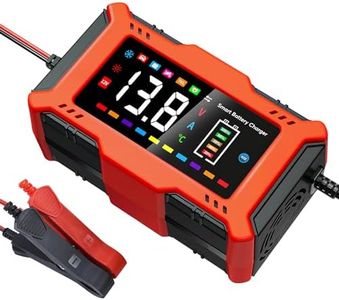We Use CookiesWe use cookies to enhance the security, performance,
functionality and for analytical and promotional activities. By continuing to browse this site you
are agreeing to our privacy policy
10 Best Battery Desulfator Charger
From leading brands and best sellers available on the web.Buying Guide for the Best Battery Desulfator Charger
Choosing the right battery desulfator charger is important if you want to prolong the life of your lead-acid batteries, such as those found in cars, boats, or lawn equipment. Desulfator chargers work by breaking down sulfate crystals that build up on battery plates over time—a main cause for battery failure. When shopping for one, you’ll want to consider how it matches your battery types, how easy it is to use, and whether it has the safety features you need. By understanding the key specifications, you can confidently pick a charger that will keep your batteries healthy for longer.Supported Battery TypeThis spec tells you what kinds of batteries the desulfator charger is compatible with, such as standard flooded lead-acid, AGM, gel, or deep cycle batteries. It's important because using the wrong charger for the battery type can damage your battery or be ineffective. Most desulfator chargers are designed for lead-acid varieties, which can be found in vehicles and backup power systems. Some may be compatible with multiple types, while others are more specialized. Think about the batteries you plan to maintain: if you have regular car batteries, a basic lead-acid compatible charger is fine; for more exotic batteries like AGM or gel, choose one that specifically supports these types.
Voltage CompatibilityThis spec indicates what battery voltages the charger supports—usually 6V, 12V, or sometimes 24V. Voltage compatibility is crucial because using a charger with the wrong voltage for your battery can cause damage. Most everyday batteries you’ll encounter are 12V, but some motorcycles or smaller equipment use 6V. If you have different types of batteries, look for a charger that supports multiple voltages and has a clear way to switch between them. Match the charger's voltage setting to your battery for safe and effective charging.
Desulfation MethodThis refers to how the charger attempts to remove or reverse sulfate buildup on the battery plates. The two main types are high-frequency pulsing and oscillating voltage. High-frequency pulsing is common and is considered gentle and effective for most battery conditions, while oscillating voltage methods may be more aggressive. Understanding the method helps you gauge if it's suitable for the batteries' age and condition. If your batteries are only slightly degraded, a gentle pulsing method is fine. For older and heavily sulfated batteries, you may want a charger with a more intense or adjustable desulfation process.
Charging Amperage (Current Output)This is the maximum current the charger can supply, usually measured in amps (A). The amperage affects how quickly your battery charges and how effective the desulfation process is. Lower amperage (1–2A) is slower but safer for small batteries or for leaving on over long periods. Higher amperage (5A or more) charges larger batteries faster and may be better at jump-starting heavily sulfated units, but can be too strong for small batteries. Match the charger’s amperage to the size of the battery you want to maintain: smaller batteries need less amperage, while larger vehicle batteries benefit from more.
Automatic Charging and Maintenance ModesMany modern desulfator chargers have automatic features that switch between charging, desulfating, and maintaining the battery without your intervention. This makes them both safer and easier to use. The automatic mode tracks the battery’s state and adjusts the process, reducing the risk of overcharging and prolonging battery life. If you want a set-it-and-forget-it experience or peace of mind while the charger is connected for days or weeks, choose a charger with intelligent, automatic modes.
Safety FeaturesSafety features can include reverse polarity protection (in case you connect the clamps incorrectly), spark-proof connections, short-circuit protection, temperature compensation, and overcharge protection. These features are important because they reduce the risk of accidents, battery damage, and personal injury. If you’re a beginner or don’t want to worry about making mistakes, prioritize a charger with built-in safety features for stress-free use.
Ease of Use (Display and Controls)This relates to how user-friendly the charger is. Some models offer digital displays that show charging status, battery health, error codes, or voltage. Others have simple indicator lights. Controls can range from single-button operation to multiple settings for different battery types or stages. Consider how comfortable you are with technology: if you want something straightforward, look for minimal controls and clear indicators; if you like more information and adjusting settings, opt for a charger with a detailed display and more control options.
